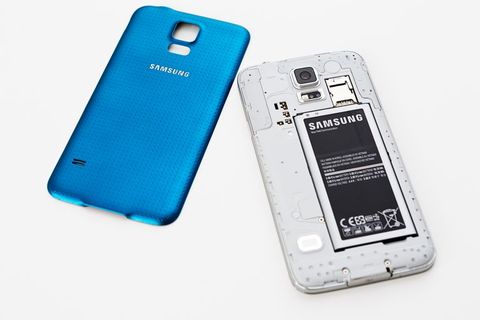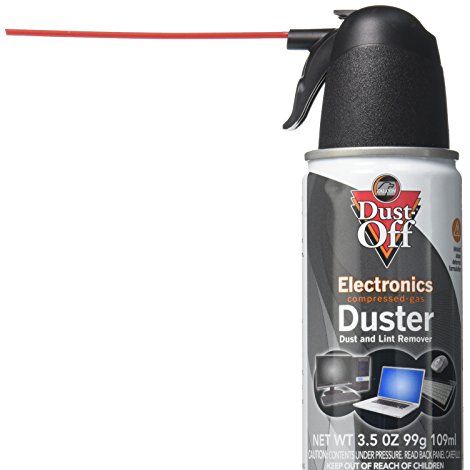Common advice says that if you’ve dropped your phone the toilet—or some other body of water—all you have to do is toss your afflicted phone into a bowl of rice and everything will be fine come morning.
Sadly, this is more a myth than useful advice. But that doesn’t mean you should give up on your smartphone. Before you try going to a repair shop and potentially spending hundreds of dollars, there are plenty of DIY hacks you can try out.
Waterproof vs. Water-Resistant
First, it’s worth knowing if your phone is in any real danger. In recent years, many phone makers have made their devices water-resistant. But water resistant is not the same thing as waterproof.
Waterproof means that a device is impervious to water for any duration while water-resistant means that a given device is graded for water exposure for a given amount of time and up to a certain depth. When we talk about watches, smartphones, and tablets, we usually mean water-resistant.
To figure out how tough your phone stands up against water, you’ll need to familiarize yourself with the IP standard, which the International Electrotechnical Commission in Geneva, Switzerland drew up to designate how resistant an electronic device is to fresh water and other common materials like dirt, dust, or sand.
The next digit, following “IP,” is the rating for a device’s resistance to solids. So, all water-resistant phones start out with “IP6” in the code name, which tells you that no harmful dirt or dust will get into the unit even after direct contact for eight hours.
The fourth digit will be either a 7 or an 8, meaning your device is either rated IP67 or IP68. The former standard means that your phone can be submerged in up to one meter of fresh water for about 30 minutes without any seeping into the device, while IP68 means that the device can be submerged in up to 1.5 meters of water for up to 30 minutes.
Modern phones that meet the IP67 standard include the iPhone X and iPhone 8, while newer phones like the iPhone 11 Pro, Samsung Galaxy Note 10, and Google Pixel 4 meet the IP68 standard.
But if your device doesn’t meet either standard, like cheaper phones like the Pixel 3a, you’ll need to jump into action.
First, Turn Off Your Phone
After you’ve fished out your phone, immediately power down the device to reduce the chance of any electronic components shorting on you.
Next, use a pin or a SIM card removal tool to pop open the SIM tray and remove the SIM card. Water could have gotten into this tiny opening and you don’t want to risk having to replace your sim card, too. It’s not a huge expense but it can be a pain.
⚠️Also take out your battery, but more likely than not your phone doesn’t have a removable battery.
Dry Your Phone ASAP
Next up: dry your phone off. This sounds like the simplest step, but this actually where things get tricky. While rice is that ever-popular urban legend, but it might not be the best material to soak up excess H2O.
Don’t even think about taking a hair dryer to your handset. Added heat could cause corrosion if there is any water on your phone’s hardware. Instead, start with a soft, microfiber cloth, the kind you use to wipe smudges off of your glasses. If you can remove the back panel of your phone, use a cloth to wipe down the components inside.
This should go without saying but don’t put it in the microwave You’re only going to catch your phone on fire, which certainly will make it dry, but not very operational. Instead, if you want some warmth to coax out whatever water has not yet dissipated, consider letting your phone rest on a windowsill in some sunlight or using air-in-a-can to blast the water out.
So About That Rice…
You could try powering your phone on at this point to assess the damage, but we recommend taking a further step before risking turning the phone on. Submerge your phone in a desiccant—a substance that will induce dryness by absorbing water. That’s just a fancy way of saying, grab the rice.
But rice isn’t as absorbent as you may think. Gazelle, a company known for buying used and broken devices and then reselling them, conducted a series of experiments to see which desiccants worked best with which phones. In the tests, Gazelle submerged nine different smartphones for 10 seconds each before placing the phones into a bowl of some absorbent household material, like rice.
Six of nine devices did power back on after using the rice method and another two were recovered enough to at least pull most of the data from the phone. Interestingly, Samsung devices did better with the rice than iPhones.
However, it turned out that rice was still an “inferior” drying agent, coming behind not only silica gel—the packets that come in the package with most electronics to keep moisture at bay during shipment and throughout a device’s shelf life—but also other materials like oats and couscous.
“If a drying agent is used, silica gel is the best of the options tested, followed by couscous and instant rice. Conventional cat litter, oats, and chia seeds are not recommended because of the dust and debris that they deposit inside of the phone,” the company wrote in its findings. “Water damage recovery kits that contain small quantities of silica gel are not recommended because they are unlikely to perform as well as open air. Uncooked white rice is not recommended due to its poor performance as a drying agent.”
So use silica instead of rice. If you don’t have that, try some oats. Never seal the container that you’re using, you want the water to evaporate.
If All Else Fails…
If your phone was submerged for a good amount of time or your phone short-circuited, you still have options. Apple accepts water-damaged phones as part of its trade-in program, though you’ll have to have tempered expectations for how much money you’ll get on a gift card, in return.
If you’re not Team iPhone, you can resell your phone on a site like Gazelle, which also accepts water-damaged devices. If those methods don’t yield enough cash to buy a new phone, maybe you can at least buy a waterproof case in preparation for your next one.
What About Tablets and Laptops?
With tablets, you’ll want to follow the same general rules as above, though you may not have a sim card to remove. With laptops, though, your approach will diverge a bit—good luck fitting your laptop into a bowl of silica gel.
The same rules apply as above for laptops, but with a few additions. For instance, while powering down a laptop to avoid short-circuiting, don’t attempt to pull any chargers out of the wall with your bare hands—it’s a serious shock threat. Instead, turn off the power by flipping the corresponding switches in your circuit breaker before you unplug the charger. Take the back plate off and wipe down the components with a microfiber towel. You should set the computer upside and allow it to air dry. When you power back on, you should be good to go.
If not, try replacing the battery. If you’re still stuck, well, you’re just going to have to hit a repair shop.
This content is created and maintained by a third party, and imported onto this page to help users provide their email addresses. You may be able to find more information about this and similar content at piano.io
















